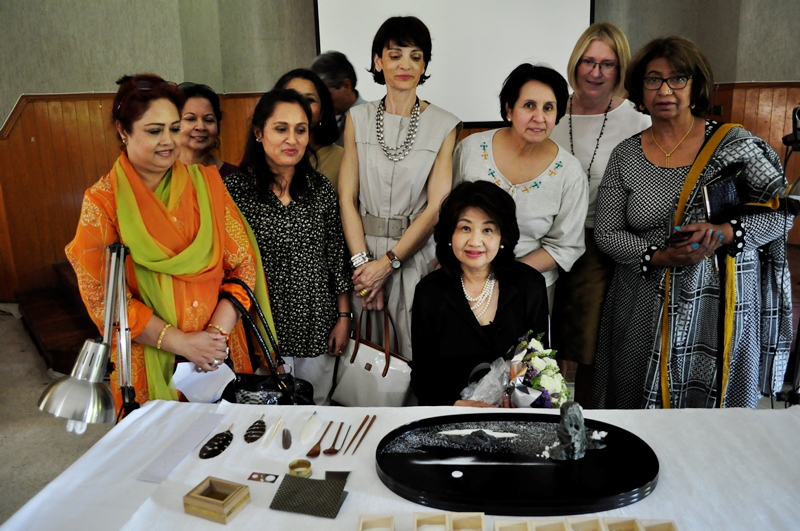The Embassy of Japan in collaboration with the Islamabad Foreign Women’s Association (IFWA) organized a live demonstration of “BONSEKI” which is a traditional Japanese art in which scenery of the four seasons is portrayed in miniature by placing natural stones on black lacquer trays with various size and amounts of white sand used to add dimension.
Mrs. Midori Inomata, wife of the Ambassador of Japan, today gave a live demonstration of the Japanese art of BONSEKI at the IFWA Centre which was well attended and deeply appreciated by the art lovers. Mrs. Midori Inomata captivated the attention of the viewers by skillfully demonstrating the art of BONSEKI.
BONSEKI scenes often depict mountains, seashores, and gardens. Small stones are used to represent mountains, shore lines or rocky islands that waves break upon. Miniature structures, usually of painted copper, are sometimes added to the work to make houses, temples, bridges, and the like.
It is said that Bonseki began when Empress Suiko (592-628) admired a mountain-shaped stone that was attached to the lid of an incense burner, “Hakusan-Koro”, which had been placed on a tray for her crown. In the Edo era (1603-1867), Bonseki and other arts such as Sado (the tea ceremony), Kado (flower arrangement), and Kada (listening to incense), enjoyed popularity amongst wide strata of society, from the nobility to ordinary townspeople.
Stone, being hard, strong, and not easily changed, evokes strong marital ties, harmonious relations, and longevity. In the old days, while receiving guests, one may burn incense to purify the place and prepare stone decoration to symbolize long-lasting peace and good health.
|
